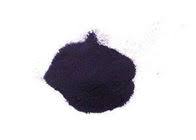Creating Harmonious Spaces with Indigo Hues and Natural Materials for a Modern Home Aesthetic
Exploring Indigo Material History, Significance, and Modern Applications
Indigo, a deep blue dye derived from the leaves of the indigo plant, has a rich history that spans across cultures and centuries. This fascinating material, known for its vibrant hue and dyeing properties, has played a significant role not only in the textile industry but also in cultural and social contexts around the globe.
Historically, indigo dyeing dates back to ancient civilizations. Evidence suggests that indigo was used in Egypt as early as 2500 BC, and it made its way to Asia where it became a vital part of textile production. In India, indigo cultivation and dyeing reached new heights during the Mughal period, with intricate patterns and designs becoming synonymous with the fabric. The indigo trade flourished in Europe from the 16th century onward, where it became a highly sought-after commodity, significantly influencing global trade routes.
The production of indigo is not only labor-intensive but also requires a unique alchemical process. The leaves of the indigo plant (most notably Indigofera tinctoria) undergo fermentation to extract the dye. This natural process results in an array of shades, from soft pastel blues to deep navy. The versatility of indigo makes it a favorite among artisans and designers who appreciate both its aesthetic qualities and its deep-rooted cultural significance.
Despite its widespread popularity, the indigo industry has faced challenges, particularly during the colonial era when the forced labor and exploitation of workers were rampant. Countries like India and West Africa saw their traditional practices disrupted by colonization and the advent of synthetic dyes in the 19th century. Today, there is a resurgence of interest in natural dyes, fueled by a growing awareness of sustainability and ethical fashion.
indigo material

Indigo dyeing has evolved significantly in recent years, with many artisans and brands embracing traditional techniques while incorporating modern aesthetics. Sustainable practices have become a focal point, with an emphasis on organic farming, small-scale production, and eco-friendly dyeing methods. Many designers are now exploring indigo’s applications beyond textiles, integrating it into home décor, accessories, and art. Its deep, rich color has a calming effect, making it a popular choice in interior design.
The significance of indigo material extends beyond its visual appeal; it carries deep cultural meanings
. In various cultures, the color blue represents trust, wisdom, and confidence. In India, the symbolic use of indigo has been linked to spirituality and healing. Furthermore, indigo's journey through history highlights issues of trade, colonization, and cultural exchange, making it a poignant symbol of both conflict and collaboration among societies.As we move forward, the narrative of indigo will likely continue to evolve. The modern movement towards sustainable fashion is revitalizing interest in natural dyes and organic materials. Consumers are becoming more conscious of their choices, favoring brands that honor traditional craftsmanship and ethical practices. This resurgence reflects a broader trend towards valuing heritage and environmental stewardship in the textile industry.
In conclusion, indigo material stands as a testament to the interplay between culture, history, and sustainability. It embodies a legacy that is both rich in tradition and ripe for innovation. As we embrace the beauty and significance of indigo, we not only celebrate its past but also forge a new future that respects craftsmanship, culture, and the environment. Whether in fashion, art, or design, indigo will undoubtedly continue to inspire and captivate generations to come.
-
The Timeless Art of Denim Indigo Dye
NewsJul.01,2025
-
The Rise of Sulfur Dyed Denim
NewsJul.01,2025
-
The Rich Revival of the Best Indigo Dye
NewsJul.01,2025
-
The Enduring Strength of Sulphur Black
NewsJul.01,2025
-
The Ancient Art of Chinese Indigo Dye
NewsJul.01,2025
-
Industry Power of Indigo
NewsJul.01,2025
-
Black Sulfur is Leading the Next Wave
NewsJul.01,2025

Sulphur Black
1.Name: sulphur black; Sulfur Black; Sulphur Black 1;
2.Structure formula:
3.Molecule formula: C6H4N2O5
4.CAS No.: 1326-82-5
5.HS code: 32041911
6.Product specification:Appearance:black phosphorus flakes; black liquid

Bromo Indigo; Vat Bromo-Indigo; C.I.Vat Blue 5
1.Name: Bromo indigo; Vat bromo-indigo; C.I.Vat blue 5;
2.Structure formula:
3.Molecule formula: C16H6Br4N2O2
4.CAS No.: 2475-31-2
5.HS code: 3204151000 6.Major usage and instruction: Be mainly used to dye cotton fabrics.

Indigo Blue Vat Blue
1.Name: indigo blue,vat blue 1,
2.Structure formula:
3.Molecule formula: C16H10N2O2
4.. CAS No.: 482-89-3
5.Molecule weight: 262.62
6.HS code: 3204151000
7.Major usage and instruction: Be mainly used to dye cotton fabrics.

